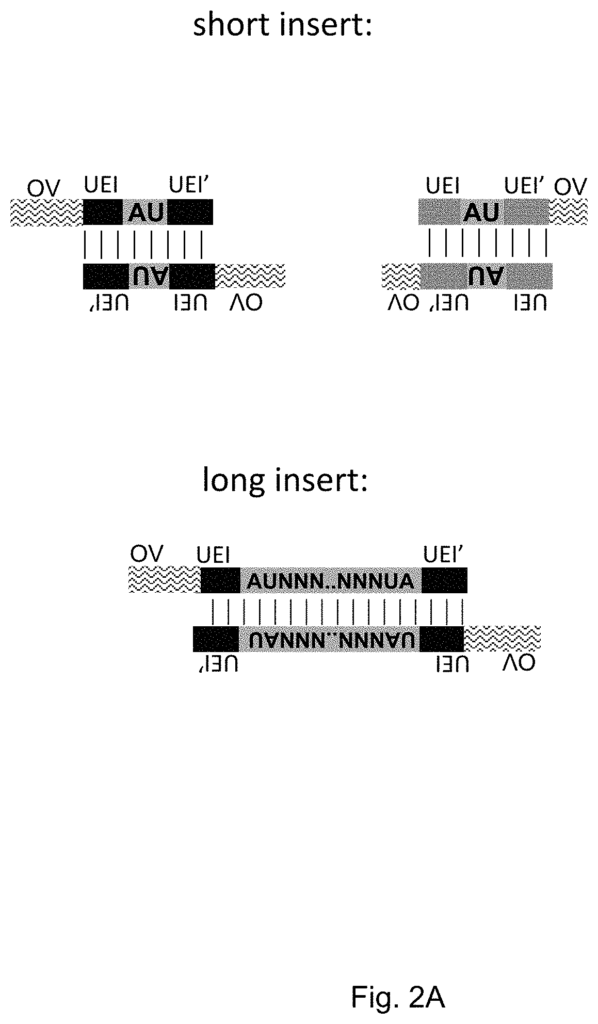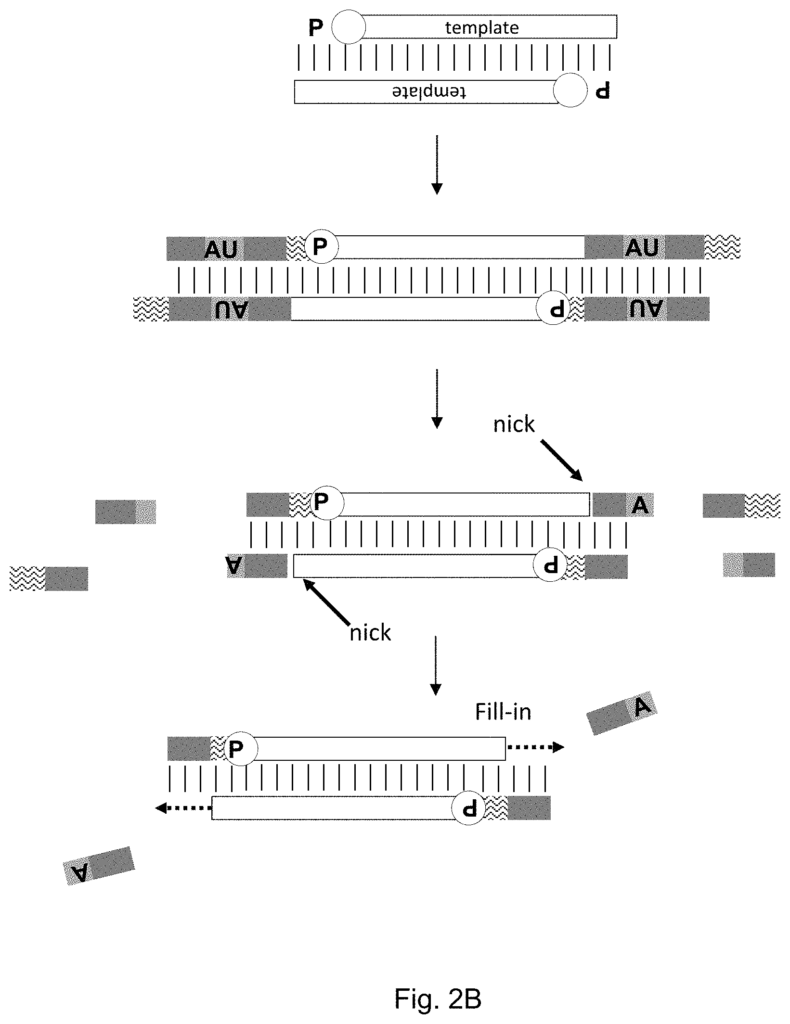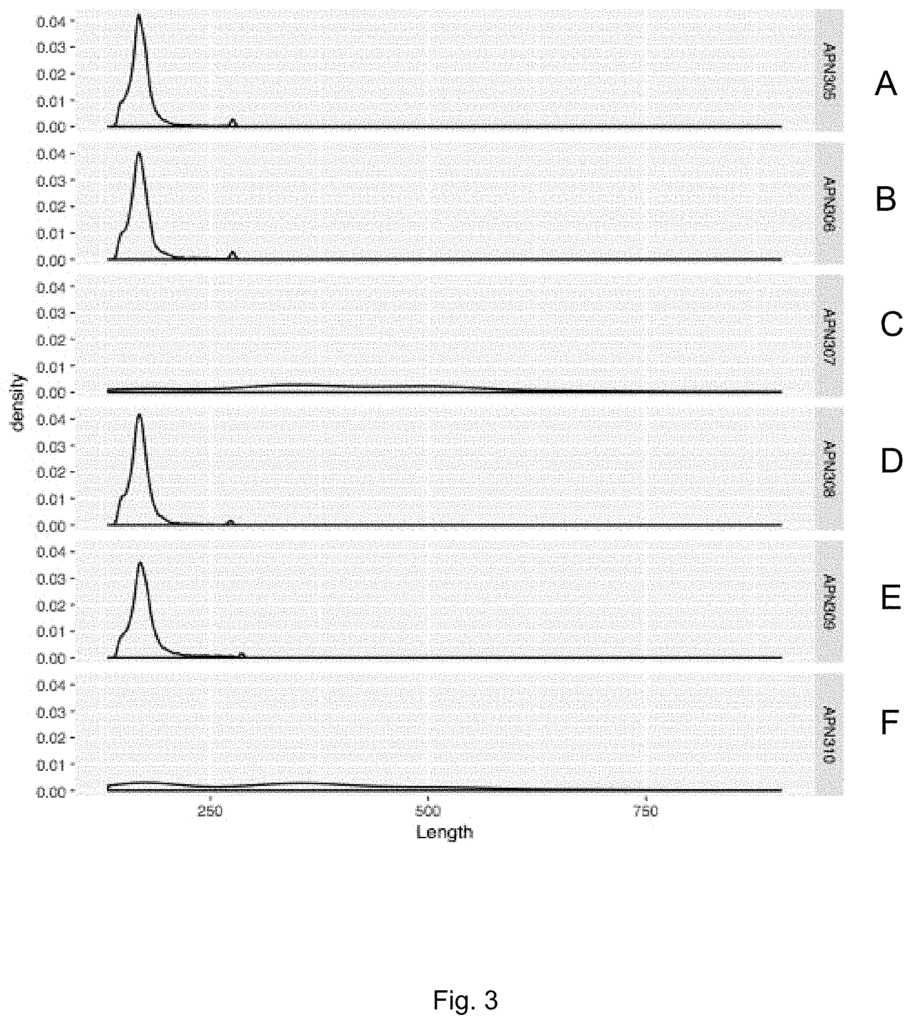Invented by Kelly M. HARKINS KINCAID, Joshua D. KAPP, Christopher J. TROLL, Claret Bioscience LLC
One of the primary drivers of this market growth is the increasing need for genetic testing and personalized medicine. With advancements in technology, it has become easier and more cost-effective to sequence and analyze an individual’s DNA. This has led to the development of methods like next-generation sequencing (NGS), which allows for the simultaneous analysis of multiple genes or even entire genomes. NGS has revolutionized the field of genomics and has opened up new possibilities for understanding genetic diseases, identifying genetic variations, and developing targeted therapies.
Another significant factor driving the market is the increasing use of nucleic acid analysis in agriculture. Farmers and researchers are now using nucleic acid-based methods to identify and characterize crop varieties, detect plant diseases, and improve crop yield. These methods enable the identification of specific genes responsible for desirable traits, allowing for more precise breeding and genetic modification techniques.
Furthermore, the market for nucleic acid analysis methods is also expanding in the field of forensic science. DNA profiling has become an indispensable tool in criminal investigations, helping to identify suspects, establish paternity, and solve cold cases. The development of rapid and sensitive methods for DNA analysis has greatly improved the efficiency and accuracy of forensic investigations.
In recent years, there has been a surge in the development of innovative technologies and platforms for nucleic acid analysis. For example, digital PCR (polymerase chain reaction) has emerged as a powerful tool for quantifying and detecting nucleic acids with high precision and sensitivity. This method allows for the absolute quantification of target DNA or RNA molecules, making it valuable in applications like cancer diagnostics and infectious disease monitoring.
Additionally, advances in bioinformatics and data analysis have also contributed to the growth of this market. As the amount of genomic data continues to increase, there is a growing need for sophisticated software and algorithms to analyze and interpret this information. Companies are investing in developing user-friendly bioinformatics tools that can handle large-scale genomic data and provide valuable insights for researchers and clinicians.
In conclusion, the market for methods of analyzing nucleic acids is experiencing significant growth due to the increasing demand for genetic testing, personalized medicine, agricultural advancements, and forensic applications. The development of innovative technologies and bioinformatics tools has further fueled this growth. As our understanding of nucleic acids continues to expand, the market for nucleic acid analysis methods is expected to continue its upward trajectory.

The Claret Bioscience LLC invention works as follows
The technology is related to compositions and methods for analyzing a nucleic acid. The technology is related to some methods and compositions used for the preparation of a nucleic library. The technology is related to some methods and compositions that are used for the analysis of ends of nucleic acids fragments.

Background for Methods of analyzing nucleic acids
The genetic information of living organisms, such as animals, plants, and microorganisms, and other forms that replicate genetic information, like viruses, is encoded by nucleic acids (i.e. deoxyribonucleic or ribonucleic acids). Genetic information is represented by a sequence of nucleotides, or modified nucleotides that represent the primary structure or chemical nucleic acid.
A number of high-throughput platforms are used to analyze nucleic acids. Illumina, for instance, uses clonal amplification of adaptor-ligated fragments of DNA. Nanopore-based sequences rely on nucleic acids molecules or nucleotides moving through a narrow channel. The preparation of libraries for certain sequencing platforms includes fragmentation, modification, ligation, and amplification (e.g. PCR amplification) of nucleic acids fragments.
The choice of an appropriate sequence platform for a particular type of nucleic acids analysis requires a thorough understanding of technologies, including the sources of error and error rate as well as speed and cost. The cost of sequencing has decreased, but the costs and throughput associated with library preparation are still a major factor. Library preparation involves modifying the ends of fragments of nucleic acids to make them suitable for a specific sequencing platform. Nucleic acid ends may contain useful information. “Accordingly, methods which modify nucleic acids ends (e.g. for library preparation) but preserve the information contained within the nucleic acids ends would be helpful for processing and analysing nucleic acids.
The invention provides methods of producing a library of nucleic acids, which include combining a composition of target nucleics and a plurality oligonucleotides, in which: a) all or some of the target nucleics have an overhang b) all or some of the oligonucleotides of the plurality oligonucleotide species comprise two strands and an overhang on a first end, with two non-complement
The invention provides methods to produce a nucleic-acid library. These include a) combining target nucleics with a number of oligonucleotides species; ii), some or all target nucleics have an overhang; iii), some or all oligonucleotides within the group of oligonucleotide types comprise an overhang that can
Some or all oligonucleotides of the plurality oligonucleotide types comprise an overhang that can hybridize to an overhang of a target nucleic acids, with each oligonucleotide having its own unique sequence and length.
The invention provides methods of modifying the ends of nucleic acids, which include a) combining target nucleics with a plurality oligonucleotide sequences; iii), combining the oligonucleo
The invention also provides compositions that include a plurality oligonucleotide types, in which a) the oligonucleotide of each species includes one or more cleavage site capable of being cleaved in cleavage condition; b), some or all oligonucleotides of each species have two strands, a first and a secondary overhang each of which is capable of hybridizing with a target nucleic overhang;
The following methods are described in certain aspects: a) Combining a nucleic-acid composition containing target nucleic-acids and a number of oligonucleotide types, in which each species of oligonucleotide has its own unique overhang sequence, b) contacting each hybridization product with a strand displacer polymerase to form blunt-ended nucleic-acid fragments.
Also, provided in certain aspects are compositions that comprise a plurality oligonucleotide types, wherein a) some of the oligonucleotides of the plurality have two strands with an overhang on a first end, and one or several modified nucleotides on a second end. The overhang can hybridize to a nucleic acid target overhang. Each oligonucleotide type has a unique sequence and length of overhang and each species of overhang and each species of overhang a

The
The invention also provides compositions that include a plurality oligonucleotide types, in which a) some or all oligonucleotides have an overhang on a second side, in which the second overhang can hybridize to a nucleic acid target overhang and where each oligonucleotide type has its own unique second overhang sequence and size; and b) each of the oligonucleotides of the plurality oligonu
The following aspects of the invention are described: a) Combining a nucleic-acid composition containing target nucleic-acids and a plurality oligonucleotide-species, wherein i) one or more of the oligonucleotides has an overhang capable of hybridizing with the target overhang. Each oligonucleotide-species has its own unique overhang sequence, and iii), some or most of the target a
Also, provided in certain aspects are compositions that include a plurality oligonucleotide types, wherein a) some of the oligonucleotides comprise either i) two loops with an overhang on a first side and two non-complementary loops on a second side, or ii), one strand that can form a hairpin having a single stranded overhang and wherein the overhang has the ability to hybridize to a
Some aspects of the invention provide methods for modifying the ends of nucleic acids, which include combining a composition of target nucleic acids and a plurality oligonucleotide types, in which: a) at least some of the oligonucleotides have an overhang that is composed of RNA nucleotides and is capable of being hybridized to a target overhang; b) all or some of the target acids contain an overhang; a
Also, provided in certain aspects are compositions that include a plurality oligonucleotide types, wherein a) at least some of the oligonucleotides of the plurality contain an overhang of RNA nucleotides; wherein the overhang can hybridize to a nucleic acid target overhang; wherein each oligonucleotide type has a unique sequence and length of its overhangs, and wherein each oligon
The
The invention also provides compositions that include a) first pool oligonucleotide types, in which i ) all or some of the oligonucleotides have an overhang capable to hybridize to a target nucleic overhang. Each oligonucleotide type has its own unique overhang sequence, ii ) an oligonucleotide identification sequence specific to the one or more features in the oligonucleotide’s overhang overhang i
Each
The invention also provides compositions that include a) first pool oligonucleotide strands, wherein i ) the oligonucleotide strands in this pool are capable of hybridizing with a target nucleic overhang. Each oligonucleot

The invention provides methods of producing a library of nucleic Acids, which include a) contacting an agent containing a phosphatase under conditions where target nucleics acids are dephosphorylated to generate dephosphorylated nucleics, and where some or the entire oligonucleotides of the plurality have an overhang that can hybridize with a target overhang. Each oligonucleotide has its own unique overhang sequence, and each oli

Click here to view the patent on Google Patents.

Leave a Reply